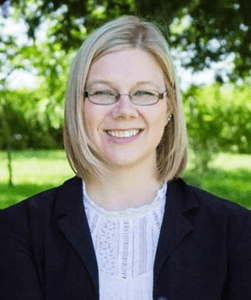The future is an interesting, unavoidable, inevitable and yet, highly influential time in all of our lives. It is something that is sure to happen but that we have a key role in influencing. Particularly in the area of goal setting and visual imagery planning, there is a lot of power in influencing our future by taking healthy steps now that may influence it. Whether it is in areas of physical health, mental health, relationships, knowledge, and roles, there are some basic ways to start creating a plan for and within yourself.
Though the steps may appear simple on the surface, really investing in these steps for personal and emotional healing can be a tedious process. But, the outcome of developing a healthier, well-round person with yourself at the face of future endeavors will show short and long-term positive outcomes.
Here are the starting steps I recommend for the goal of creating a healthier future for yourself:
1. Acknowledge Your Strengths and Weaknesses
Each of us holds specific strengths and weaknesses that are a specific to us and what we are most fulfilled at doing. It is a healthy, healing step to be in tune with both and finding a way to balance them in ways that show our own excellence! Make a clear outline of your strengths and weakness. You then can identify people in your that can fill those spots that are not your strengths or seek knowledge and skills in them. But, this also allows you to really focus on your strengths and growing and blossoming them.
2. Create a Life You Will Love
We each were created uniquely to be unique. Creating a life fulfilled with what you find personal joy in doing helps us discover the best versions of ourselves to share with and connect to others. It is a well-rounded healing of its own! Identifying your strengths and weakness will also allow you to align more with what you love and what skills you have to support that love. This is a great way to also begin filtering out things in your life that you have been doing for other reasons than your own passion and skills.
3. Be Aware of Bias
People see things very different based on demographics, morals, and experiences. Sometimes we can limit ourselves from great tools of healing and hope by our own biases. Acknowledging that we are not always right and being in the pursuit of understanding is a great tool for creating personal, life, changes. I encourage people to even right down or brainstorm their opinions on things and challenge them. This is not to change your opinion but rather to allow an understanding of why you see things one way so you can relate to people who may see it differently. Differences are a gift in growth and future planning, thus, you have to become open to them.
4. Find Freedom in Forgiveness
Forgiveness is one of the most, if not the most, healing parts of the journey. But is can also be the most challenging. Forgiveness comes with a lot of components including time, effort, and action. Nonetheless, it is a point in healing that everyone can benefit from particularly in relation to future planning. Often emotions associated with the forgiveness process (anger, sadness, hurt, resentment, etc) can limit our vision of a future without that tension. Seeking professional help, positive support systems, or even previous relationships can be a starter for the process of forgiveness even if the forgiveness is for yourself. Holding the negative emotions of our experiences causes limitations in our emotional and psychological investment towards for future goals
5. Create a Hope-Plan
A hope-plan is different than general future-planning. It allows a fluid channel of idealistic ideas and goals that may not seem capable at the time but are visions in your future. Hope plans do just that-they identify your hopes. Instead of a goal, write down a hope. Then write down what will help you get there. Write down what being there would mean. Write down what may be obstacles that can be in the way. Finally, write down how you know you can accomplish that journey. More specific goals, detailed accomplishments and listing may take place from after this step but the process of personal and mental preparation for your future, creates a hope plan that helps you identify how your hope, even with challenges, can be accomplished. It is a final step in a mind-shift that allows the process steps to start flowing.

Amber Jewell is a licensed master social worker with over 15 years of experience working with youth and families in child protective services, education and mental health services. As an educator and an advocate for promoting change for and value within people, Amber works to inspire and motivate others to grasp their own form of hope. She is also a motivational speaker and has experience in the foster system. She is the author of Finding Hope: The 12 Keys To Healing Hardship, Hurt & Sorrow.





